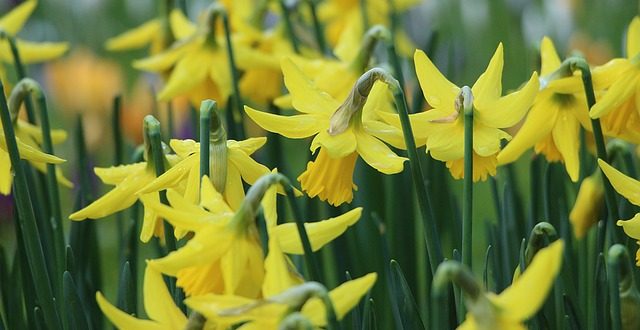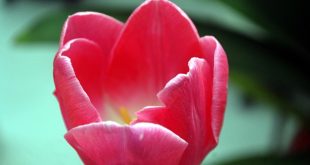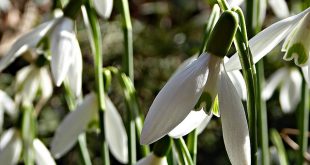March has finally arrived; the gardening year is now underway. Weather permitting, get digging. There is no need to double dig, just turning it over will be sufficient if only to try to dry out the top surface.
Seeds and Bulbs for Summer
Plant summer bulbs such as Gladiola after the last frosts. Depending on where you live and on your soil conditions, you can start sowing summer seeds directly in the ground, or in trays for later planting out. Nurture sowings of half-hardy plants in the greenhouse for the time being and then slowly harden off before they go outside. Hardening off will involve setting the plants outside in their trays or pots during sunny or mild days and then bringing them in at night before the temperatures drop. Before leaving any new seedlings in the greenhouse, do make sure you double-check for any signs of pests that may be lingering, otherwise those new seedlings could be their next meal.
Lawns
Avoid walking on the lawn until it has firmed up after the winter rain. Moss is likely to be evident after a wet winter. Light scarifying should be done if you are thinking of aerating later on. Once the weather has warmed up, mowing will be necessary. Start with just a light cut follow up with moss killer or a spring lawn feed.
Lay turf to patch and repair edges, it’s too early to seed.
Trees and Shrubs
The next couple of weeks will be the last opportunity to plant bare rootstock. When planting trees always get a good heavy stake to support it. One tip is, after you have dug the hole for the tree, bang the stake in first – it is much easier putting a tree to a stake than the other way round. When planting always put a handful of bonemeal into the soil before you fill in this will help with root development and ensure a good start.
The winter Jasmine has nearly finished flowering, remove all the flowering stems to allow new growth through for flowering next year. The Mahonia x Beanii can be tidied up too as the flowers begin to go over – just wait a couple of weeks if you want to reduce the height – new shoots will begin to emerge on the main stems giving you an indication where the buds are.
Other shrubs to prune now include the ‘Dogwoods’, both yellow and red stem varieties. Pruning will not only keep them under control but also ensure that the new growth will keep the shrub looking colourful through the winter months. Elders (Sambcus) are very vigorous so will need hard pruning to keep them under control, take current growth back to one or two buds. Cut back hardy fuchsia to about a third of its size. Cut back both the flower spikes and foliage of Pampas grass, watch out for the foliage; it is vicious so wear strong gloves.
Borders and Containers
Lift, divide and replant untidy and overgrown perennial summer plants. Repot plants grown in a container every 2-3 years replacing as much soil as possible. In other years refresh by top dressing with fresh soil. Consider adding a mulch layer to reduce moisture loss.
This is the best time to prune roses, follow any instruction provided.
Lightly trim winter flowering heathers to remove the old flowering stems. Tackle this with a hedge trimmer if there is a lot to do. Take the cutting slowly so as not to create a ragged finish. Pruned a little harder, any that look a little ragged to encourage new growth.
Sweet Peas are a classic favourite especially as they are now available in specific colours and fragranced packs. Remember to soak the seed overnight to ensure a uniform germination. Sow individually into pots or into seed trays. In pots, as well as the reduced handling, it is easier to pinch out at 6″ without causing them to break, ready for their final planting. With early sowing, it is possible to get them out as soon as possible and benefit from the earlier flowering.
Cuttings
Take cuttings of geraniums and chrysanthemums that have over-wintered in the greenhouse. In the of case geraniums take cuttings from non-flowering stems, remove the lower leaves and set into either seed trays, plug trays, very small pots, or put several into a larger pot. It is never a good idea to try to root them into their final pot size – they will always suffer in the long term. Use a general cutting compost, possibly with a little extra grit to assist drainage.
Take chrysanthemum cuttings as basal cuttings, no longer, than about 4″, removing the lower leaves and retaining the tip. Place into seed trays or plug trays and cover with a propagator lid with a little venting, as they prefer a humid environment for rooting.
Weed Control
Dormant seeds will burst into life as the weather warms. To avoid the need for regular hoeing you can mulch the bed and/or use a control membrane.
Pests
Slugs are particularly fond of fresh spring shoots, there are numerous products available, none of which unfortunately, are completely effective. Hedgehogs love slugs, so if you are lucky enough to have them in your garden, don’t scare them away.
Keep an eye out for signs of vine weevil, plants that have been otherwise quite healthy have their root systems stripped. There are various compounds and chemicals on the market to control vine weevil.
Fruit
Place compost or rotted manure around trees away from the trunk. Cut autumn fruiting canes at ground level and remove excess growth from spring fruiting varieties.
You only have a couple of weeks now to complete the top fruit pruning. It will be necessary to start spraying in the next couple of weeks against various pests and diseases including Sawfly, Codling Moth Aphids and Mildew. Spraying will need to begin just after blossom fall.
Vegetables
If not done already, dig over the patch thoroughly and add plenty of compost. Plant onions and shallot sets in drills if the soil has warmed up and not waterlogged. Just push firmly into the soil with a light twist. Protect with a netting if you are plagued with wildlife lifting them out. Just get some short bamboo canes set along the row with small plastic bottles over the ends, and then drape the netting over the canes along the row. Remove when they have rooted into the soil.
To give seed potatoes a head start, you can chit them (get them sprouting) before planting them out. You place them on an old egg tray or similar with the most eyes upwards. They are ready when there are 2-3 good chits or sprouts.
Sow lettuce and radish, cloche the rows to give some added protection and sow thinly to ensure a gentle supply through the season
Lift any parsnips still in the ground.
Winter Flowers
Hellebores (Christmas rose) have a variety of leaf types and an abundance of flower colours ranging from greens, pinks, creams, whites and almost black – they give a welcome splash in an otherwise dreary part of the year.
They prefer a well-drained soil; raised beds are ideal, with plenty of organic matter at the bottom. Leaf mould is best, well-rotted manure will be the next best thing. They prefer a light position away from direct sun and can be grown under trees providing that the canopy is fairly high to allow light through, but not too close to the trunk as this can tend to be too dry for them. The only real maintenance is to deadhead the flowers when they have finished (unless you want to save the seed), and periodic mulch in the autumn. Split Hellebores when they have finished flowering.
Ponds & Wildlife
A small pond will probably need clearing out every 5 years, whereas a larger one will go to 10 years or more. Clearing the pond is necessary on several fronts. Plants may be becoming invasive or need splitting/re-crating. There will invariably be an amount of ‘sludge’ on the bottom which will be a collection of silt, and other rotting debris, this will reduce the amount of oxygen to any fish that are in there. It will also give you an opportunity to check for any leaks if there has been an unusual drop in the water level over the last few months. When removing any fish place them into a sizable container using the existing water from the pond together with some existing weed as well. When re-filling the pond, allow the water to stand for several days before re-introducing the fish back.
If it has been necessary to place a pond heater in the water, then this can be removed and replaced with the pump. Before placing it back into the water, dismantle where possible and clean out all filters. It’s worth dropping it into a bucket of water and switching on just to check everything is OK.
Birds will soon start to think about nesting and you can help. If you have a tumble drier, when you clean out the filter put the flock into a bird feeder, you’ll be amazed how quickly it goes!
 Gardeners Club The Gardeners Club is a free to join online club for everyone with an interest in gardening and gardens.
Gardeners Club The Gardeners Club is a free to join online club for everyone with an interest in gardening and gardens.





